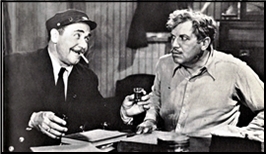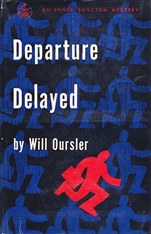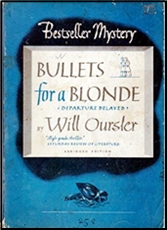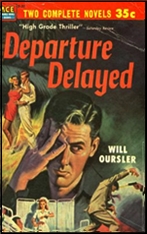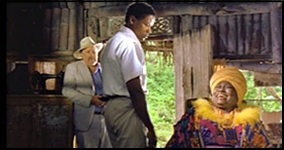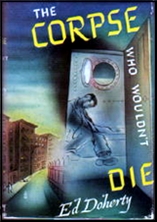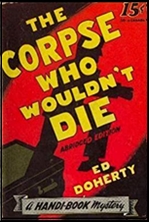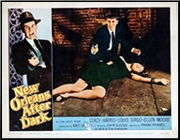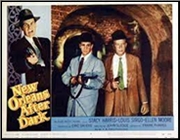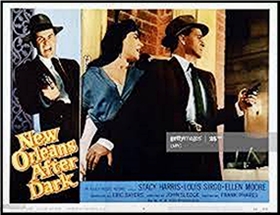FIRST YOU READ, THEN YOU WRITE
by Francis M. Nevins
In a column from a few years back I discussed the Maigret short stories that Georges Simenon wrote in the late 1930s, the years just before the outbreak of World War II. There were very few such stories during the war years but, sandwiched between several non-series books, we find a total of six Maigret novels, which are all worth some attention.
We have to keep in mind, of course, that Simenon wrote them in France when that country was first threatened and then occupied by the Nazis. It was an unwritten rule during these years that every novel, story and film had to be set, explicitly or by implication, back in the tranquil Thirties. (For the impact of this rule on the French film industry, which was totally controlled by Germany during the occupation years, I refer you to my friend Tony Williams’ 2018 essay “The Silence of the Noir†in FILM NOIR PROTOTYPES: ORIGINS OF THE MOVEMENT, ed. Alain Silver & James Ursini.) This is certainly true of Simenon’s wartime fiction, whether stand–alone novels or Maigrets.
***
A few months into 1939, Simenon and his then wife and their newborn son moved to Nieul-sur-Mer, a village about six kilometers from the seaport city of La Rochelle. That was the family’s home at the time Hitler invaded his neighbors and it was there that he wrote the final two Maigret short stories. (All the later Maigrets at less than novel length are too long to be described as short stories.) Both tales first appeared in the weekly Sept Jours and were collected after the war in MAIGRET ET LES PETITS COCHONS SANS QUEUE (Presses de la Cité, 1950).
“L’homme dans le rue†(Sept Jours, 15 & 22 December 1940, as “Le prisonnier dans la rueâ€) is a tale of pure atmosphere, with a plot all but non-existent. On a freezing Sunday night a well-to-do physician is shot to death in the Bois de Boulogne. A few days later Maigret has an announcement published in the newspapers that an arrest has been made and that a reconstruction of the crime will take place early the next morning.
With the arrestee played by a small-time criminal known as P’tit Louis (perhaps the same Louis who appears in several other Simenons and perhaps not), the reconstruction is held, with Maigret’s men planted all over the Bois to check out anyone who seems unduly interested.
Attention quickly focuses on one man and the chase begins, “a chase which was to go on for five days and five nights, through a city that was unaware of it, among hurrying pedestrians, from bar to bar, from bistro to bistro, Maigret and his detectives taking it in turns pursuing this solitary man and becoming, in the end, as exhausted as their quarry.â€
After Maigret plants another story in the papers, this one completely false, the man gives up and confesses — -no, he is not the murderer — and the story ends. It first appeared in English as “Inspector Maigret Pursues†(Ellery Queen’s Mystery Magazine, October 1967), and was collected under its original title “The Man in the Street†in MAIGRET’S CHRISTMAS (Hamish Hamilton 1976, Harcourt Brace Jovanovich 1977). In English, by the way, P’tit Louis becomes Louis the Kid.
If nothing else, “Vente à la Bougie†(Sept Jours, 20 & 27 April 1941) is a sterling example of unity of time and place, consisting of a single scene in a single setting, an isolated country inn in the middle of the marshes of the Vendée, although describing the tale requires me to break those unities.
On the evening before a local farm is to be auctioned off on a cash-only basis, apparently for non-payment of debts and taxes, two wealthy peasants come to the inn with large sums of money for the bidding. Near midnight one of these men is found in his room with his skull fractured, his mattress on fire and his well-stuffed wallet missing.
Maigret, presently head of the crime squad in Nantes (a position he never held except in this story), comes alone, believe it or not, to investigate. There are seven suspects: the innkeeper (who happens to be an ex-convict), his fat paramour, a teen-age servant girl, the farmer who was about to lose his property, the other potential buyer, and two locals.
Recognizing that the case depends on why the mattress was set on fire, Maigret makes the seven re-enact their moves on the fatal evening over and over. As usual in Simenon, the reader has no chance to beat the Commissaire to the solution, which involves an insurance policy of a sort that, if it ever existed, must have been unique to France: the insured is paid off if he lives to age 50!
The tale appeared in English as “Inspector Maigret Directs†(Ellery Queen’s Mystery Magazine, March 1967) and, like the one before it, was collected in MAIGRET’S CHRISTMAS. In case you were wondering, “Vente à la Bougie†literally means sale by candlelight, which has somehow, don’t ask me how, come to mean an auction.
***
In December 1939 Simenon wrote the earliest of the six wartime Maigret novels, LES CAVES DU MAJESTIC, which wasn’t published in the U.S. until 1978 (as MAIGRET AND THE HOTEL MAJESTIC). The title seems to be a tip of the beret to Simenon’s friend and admirer André Gide (1869-1951) and his 1914 novel (which he refused to call a novel) LES CAVES DU VATICAN.
The basement of this luxe Paris hotel (which, according to www.trussel.com, a gem of a website if ever there was one, was modeled on the Claridge in the same city) has more to do with Simenon’s plot than the caverns underneath the Vatican with Gide’s, but in neither work are the caves central as those beneath the Paris Opera House are in THE PHANTOM OF THE OPERA.
The Maigret novel opens early one morning as a breakfast chef at the Majestic discovers the strangled body of a wealthy American woman in a basement locker and soon finds himself the prime suspect. Maigret discovers — Simenon doesn’t bother to tell us how — that the woman was French by birth and had been a semi-pro hooker in Cannes before she met an American millionaire and tricked him into marriage. In time the plot morphs from sexual to financial intrigue, and at the climax Maigret uncharacteristically punches the murderer in the nose.
Here and elsewhere in middle-period Maigret, Simenon seems to stress plot more than earlier or later, although Ellery Queen-style fair play is still not his cup of café au lait. Writing at white heat as he did, he slips here and there; for example, a police report in Chapter One gives the age of the dead woman’s maid as 42, but when Maigret gets to meet her much later in the book she’s described as an old lady.
What makes LES CAVES rough going in spots for American readers is that either the translator or the publisher was very careless with punctuation, sometimes forgetting to insert a new set of quote marks to indicate a new speaker, at other times inserting new marks although the speaker hasn’t changed.
And one tends to get heartily sick of hearing Maigret ask “What’s he (or she) saying?†whenever a character speaks English and of hearing American characters ask the same question whenever Maigret or someone else speaks French.
Still and all, I liked this book. After reading tons of Simenons in which Maigret simply absorbs people and atmospheres and at the appropriate moment tells us who did what, it’s a pleasure to find one in which he acts a bit more like a detective.
***
A month later, in January 1940, Simenon wrote LA MAISON DU JUGE (translated as MAIGRET IN EXILE, 1978). Thanks to a shake-up at the Police Judiciaire, Maigret has been transferred to Luçon, in the Vendée. After vegetating there for a few months he is visited by an old woman from the village of l’Aiguillon, some six kilometers from Luçon, a tiny place where the main occupation is mussel-gathering.
Her husband, a retired customs inspector who had met Maigret in the past, has sent her to tell him that a few days earlier, while on a ladder pruning one of his fruit trees, he had seen a dead body on the floor of a second-story room in the house back-to-back with his own, a house owned by a retired judge named Forlacroix. The body is now no longer where it was, and the suspicion is that the judge is going to drag it out and toss it into the sea as soon as the tide is high enough.
Maigret comes to l’Aiguillon, joins the old customs inspector’s surveillance, and watches the judge setting out to do precisely what it was suspected he was about to do. Thus begins the investigation, not only of the judge but of his mentally disturbed daughter, his violent-tempered estranged son, and a tough local mussel-gatherer who was sneaking visits to the house for sex with the daughter.
As usual, Maigret reaches the truth by intuition, coming close to making us doubt he’s a detective. Even though the bedroom of the judge’s daughter adjoins the room where the corpse was first seen, he never bothers to interrogate her: one conversation with her would have ended the book then and there.
Simenon even allows the judge to exit the scene halfway through the novel by confessing to a 20-year-old murder and having himself put in prison, without any formalities, any trial, rien ne va plus. I find it hard to believe that under French law at the time this was, shall we say, kosher.
The vividly evoked atmosphere that we usually find in Simenon is conspicuous by its thinness. The English translation has flaws of its own, playing so fast and loose with French accent marks that the cedilla under the c in Luçon, which signifies that the letter is pronounced soft as in Lucy rather than hard as in lucky, is perhaps best described as now-you-see-it-now-you-don’t. By any measure this is certainly one of the lesser Maigrets.
***
That Simenon managed to do any writing at all during the tumultuous year 1940 is something of a miracle. Hitler’s Wehrmacht invaded the Netherlands, Belgium and Luxembourg in May. Simenon, a Belgian citizen though residing in France for more than fifteen years, expected to be drafted.
He went by train to Paris but, on consulting with the Belgian embassy, he was directed to serve as unofficial high commissioner for the thousands of Belgian refugees pouring into his part of France. He tackled this job with the manic energy he devoted to writing. When did he eat? When did he sleep? his colleagues wondered.
After three hectic months he closed the reception center he had created and returned to Nieul and his career. A few months later he and his family moved further inland to Fontenay-le-Comte, not far from Luçon where Maigret had been stationed in LA MAISON DU JUGE. He rented part of a huge château recently vacated by the Nazis and, in December, resurrected his signature character.
In CÉCILE EST MORTE (translated as MAIGRET AND THE SPINSTER, Hamish Hamilton 1977, Harcourt Brace Jovanovich 1977) Maigret is back in Paris and in his office on the Quai des Orfèvres, working on a case involving a Polish gang that seems to date this novel contemporaneously with the 1938 short story translated as “Stan the Killer.â€
During this period he’s been visited several times by a dowdy and sheeplike young woman with the complaint that someone has been sneaking by night into the fifth-floor apartment she shares with her widowed and near-bedridden aunt: someone who disturbs various items of furniture but never takes anything.
As the novel begins she’s waiting for Maigret on yet another morning, but by the time he arrives and is ready to see her she’s vanished, leaving behind a frantic note. Alarmed, he visits the woman’s apartment building and finds her aunt, who in fact owned the building, strangled to death. Later that day the missing niece is also found dead, in a broom closet in the Palais du Justice building, which is connected with the Police Judiciaire by a glass door.
Among the most likely suspects in the aunt’s murder are a penniless nephew whose wife is about to give birth and a disbarred lawyer suspected of child molestation who occupies the apartment just below the dead woman’s. Maigret soon learns that Aunt Juliette was a miser who kept a fortune in thousand-franc notes hidden in her apartment, that she treated her niece Cécile as more or less a slave, and that, at the behest of her ex-lawyer tenant, she had become whole or part owner of several brothels.
As the case proceeds, Maigret’s superior asks him to let a visiting Pennsylvania criminologist tag along with him on the investigation. The Yank adds nothing to the plot but helps expand the book to its proper length. Maigret is given a chance to explain his methods — which boil down to the simple sentence “I feel things†— and also to introduce the American to French cuisine, like cèpes à la bordelaise and coq au vin, washed down with Beaujolais and, later, with coffee and Armagnac. (Cèpes are wild mushrooms, also known as porcini.)
The book ends with the truth discovered (although one discovery generates a thorny legal issue in which Simenon has no interest but which those who dote on such matters and don’t mind having part of the plot spoiled for them can find discussed by clicking here) and the Parisian and the Philadelphian getting tipsy together. Thanks to its rich atmosphere and vivid character sketches, CÉCILE ranks very high among the cases of Europe’s most famous detective.
***
These first three wartime Maigrets were not published separately like all the previous books in the series but in a single 528-page omnibus, MAIGRET REVIENT (1942). They appeared in the U.S. in individual volumes decades later.
Between 1941 and 1943 Simenon wrote three more book-length Maigrets, which appeared in France in an even larger omnibus volume, plus one short novel about the Commissaire which is accessible in English only on the Web. These we’ll save for another column.

